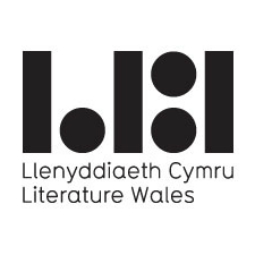(Please note that “context” is not an assessed element of this component of the WJEC in English Literature.)
Janet Eiluned Lewis was born near Newtown in Montgomeryshire (now Powys) in November 1900. Her family was well off, cultured, and educated; for example, Lewis’s Welsh-speaking mother earned a Master’s degree, had been a headmistress, and was friends with the creator of Peter Pan, J. M. Barrie. Lewis was educated at boarding school and college in London, and worked in journalism for most of her life, notably as a member of the editorial staff of The Sunday Times and as a long-term contributor to Country Life magazine (1944–1979).
Her first literary success was the novel Dew on the Grass, which was a bestseller on its publication in 1934 and won the Gold Medal of the Book Guild for the best novel of the year. Her second novel, The Captain’s Wife, came out in 1943 and was also ‘immediately popular, being reprinted twice within a matter of months’.[1] Between these novels Lewis published her first collection of poetry, December Apples, in 1935, and a collaborative, non-fiction book with her brother Peter Lewis, entitled The Land of Wales, in 1937, which depicted the landscape and people of her native country.
Lewis’s second, and final, collection of poetry was published in 1944, called Morning Songs and Other Poems. According to literary critic Katie Gramich, Lewis’s poems are ‘lyrical and song-like, almost invariably expressing a sense of loss, nostalgia or longing’.[2]
Lewis married in 1937 and moved to rural Surrey, where she lived until her death in April 1979. Despite the success of her literary career in the 1930s and 1940s, Lewis’s fame waned over the following decades; however, her novels have been republished recently amid a new scholarly interest in female Welsh writers of the twentieth century.
[1] Katie Gramich, Introduction to The Captain’s Wife by Eiluned Lewis (Dinas Powys: Honno, 2012), p. ii.
[2] Katie Gramich, Twentieth-Century Women’s Writing in Wales: Land, Gender, Belonging (Cardiff: University of Wales Press, 2007), p. 84.






‘The Bride Chest’ encapsulates the main themes and mood of Eiluned Lewis’s 1935 poetry collection, December Apples: loss, longing, and nostalgia. As in most good poetry, ambiguity is central to ‘The Bride Chest’, as ideas are suggested and intimated rather than being expressly declared. As such, a multiplicity of interpretations are possible with this poem, and one reading suggests that the heart of the poem is the absence of the groom, the bride’s husband. This individual is unnamed and never directly mentioned, but he hovers just beyond the text, haunting it. If he is now ‘dust’, his trace can only be detected in the sadness of the children left behind and the mourning bride, who escapes to the room to be alone and reminisce. The cause of this rupture to the family unit is also left unstated; the poem predates the Second World War by four years, so it cannot be due to that conflict, but it could be a response to the huge loss of life in the First World War that ended seventeen years before. However, this can only be guesswork, and ultimately the cause of the ‘coming of fears’ is much less important than its effects.
The poem begins almost as if it were a fairy tale, with winding stairs and a chest that seems to have a magical aura. Like a lot of fairy tales, there is a sinister aspect to this poem, which operates just below the surface: in the first stanza, people are reduced to disembodied parts and the house is silenced; in the second stanza, people are turned to dust, beds are empty, and the children’s lives are filled with crying; in the third stanza, nature has become hostile and possibly scornful, and the female figure lacks vitality. However, the strength of this poem comes from its ability to also offer some hope for the future. The extremely regular form and rhyme scheme of the stanzas suggest life can, and will, go on. The first stanza shows that the bride achieves peace when she visits the chest; the second stanza relates that, at least, life had been good previously and memories of the ‘fortunate lovers’ and the time of ‘plenty’ might offer some solace; and in the third stanza, rain falls, which usually brings a garden to life. In fact, this final stanza is key to a more optimistic reading of the poem: the rhetorical question of whether the trees will flower again is not answered in the negative, and the image of a tree, which can look dead in winter but return to life in summer, could indicate that everything that happens is part of a natural cycle. Finally, it is perhaps relevant to observe that lilac was associated with the mourning process in Victorian times. The first period of deep mourning saw the bereaved wearing black; however, the progress towards returning to normal life involved a stage called ‘half-mourning’, in which colours such as lilac would be worn. In light of this, the lilac linked in the poem to the bride could suggest she is nearing the end of the grieving process and, when the trees flower again, will find hope in the future.